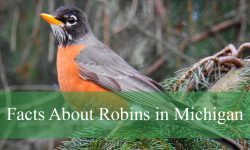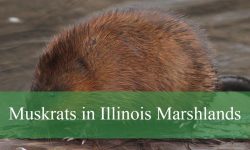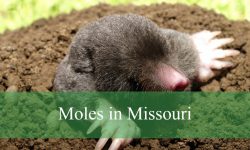Parrots in California have become a fascinating and colorful part of the state’s urban wildlife. Though many species are not native, they have successfully adapted to city parks, neighborhoods, and green spaces across Southern and Northern California. These vibrant birds add a splash of exotic beauty and lively sounds to the Californian environment.
With 13 different species of parrots now commonly found throughout the state, California offers one of the most diverse populations of free-flying parrots in the United States. From the striking Red-crowned Parrot to the playful Mitred Parakeet, each species has unique colors, calls, and behaviors that birdwatchers and nature enthusiasts love to observe.
This article guides readers through identifying the 13 Parrots in California, complete with pictures and detailed descriptions. Bird lovers and curious observers alike will find useful information to spot and appreciate these beautiful parrots in their urban habitats.
Common Parrots Found in California
Red-crowned Parrot (Amazona viridigenalis)
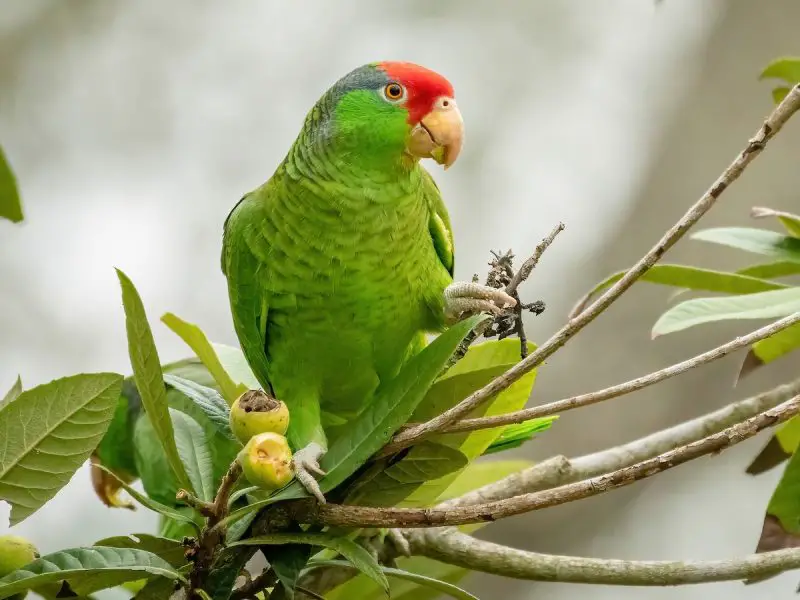
The Red-crowned Parrot is a medium-sized parrot native to northeastern Mexico but has established a thriving population in Southern California, especially around Los Angeles. These parrots measure about 13 to 15 inches (33 to 38 cm) in length and weigh approximately 300 to 400 grams. Their vibrant green body feathers are contrasted by a distinctive bright red crown on the head, which makes them easily identifiable. They also feature a blue patch on the wings and a yellowish tint around the cheeks.
In terms of vocalizations, the Red-crowned Parrot has a loud, harsh call that consists of repetitive squawks and chattering noises. Their calls are quite piercing and are often heard early in the morning or at dusk when the birds gather in flocks. These social birds communicate frequently and use vocalizations to maintain group cohesion and warn of potential threats.
Behaviorally, Red-crowned Parrots are highly social and usually seen in small to medium-sized flocks. They are active during the day, spending time foraging for fruits, seeds, nuts, and berries in trees and shrubs. In California, they are commonly found in urban parks, residential neighborhoods, and riparian woodlands where food sources are plentiful.
Their established population in California is mainly concentrated in Los Angeles County and nearby urban areas, where they have adapted well to the Mediterranean climate and human-altered habitats. These parrots nest in tree cavities and sometimes in palm trees, successfully reproducing in the wild. The Red-crowned Parrot is considered one of the most successful naturalized parrot species in California.
Lilac-crowned Parrot (Amazona finschi)

The Lilac-crowned Parrot is a striking parrot species native to western Mexico that has established feral populations in California, mainly in Southern California regions such as Los Angeles and San Diego. This parrot measures about 13 inches (33 cm) in length, with a bright green body and a unique lilac or purplish crown that gives the bird its name. Its face features a pale yellow-green mask around the eyes and some blue markings on the wings.
These parrots have a variety of vocalizations, including loud squawks and whistles. Their calls are often high-pitched and melodious compared to other Amazon parrots. The Lilac-crowned Parrot uses vocalizations to communicate with flock members, especially during flight and feeding activities.
The Lilac-crowned Parrot is a highly social species, frequently observed flying in flocks or roosting communally. Their diet consists mostly of fruits, seeds, nuts, and berries, which they forage for in parks, gardens, and wooded urban areas. They are known for their curious and playful nature, often seen exploring tree branches and interacting with other parrots.
In California, this species prefers warmer climates and is mainly found in urban areas with plentiful food and nesting sites. Like other naturalized parrots, they nest in tree cavities and adapt well to city environments, including palm-lined streets and parks. Their adaptability has contributed to their successful establishment in the state.
Red-lored Parrot (Amazona autumnalis)

The Red-lored Parrot, native to Central and South America, has also established populations in parts of Southern California. These parrots are about 12 to 13 inches (30 to 33 cm) long and are easily identified by their bright green plumage with a distinctive red forehead and yellow cheeks. Their beak is pale, and they have blue feathers around the eyes, adding to their colorful appearance.
Red-lored Parrots produce loud, repetitive squawks and screeches which can be quite noisy, especially in flocks. Their vocalizations help maintain group contact and coordinate social activities. They are known for their ability to mimic sounds and even human speech when in captivity.
These parrots are highly active and social, usually found in groups ranging from a few individuals to large flocks. Their feeding habits include searching for fruits, seeds, and nuts in tree canopies and shrubs. They are particularly fond of figs and berries and can often be seen foraging in urban parks and gardens where such food sources are available.
In California, the Red-lored Parrot population is concentrated in the warmer southern parts of the state. They thrive in urban and suburban environments, nesting in tree hollows and sometimes in palm trees. Their successful adaptation to local habitats has allowed them to maintain stable populations outside their native range.
Yellow-headed Parrot (Amazona oratrix)
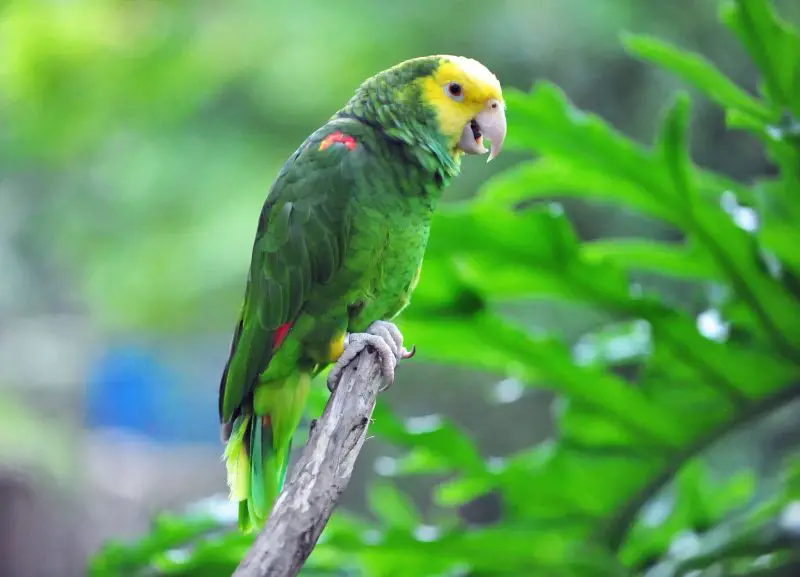
The Yellow-headed Parrot is one of the larger Amazon parrots, measuring about 14 to 16 inches (36 to 41 cm) in length. It is native to Mexico and Central America but has established feral populations in Southern California. This parrot is distinguished by its bright yellow head contrasting with a green body, and red markings on the wing feathers. Its strong beak is pale gray and adapted for cracking nuts and seeds.
This species is known for its loud, raucous calls that include whistles, squawks, and screams. Yellow-headed Parrots are very vocal and use these calls for communication within flocks as well as for territory defense. Their sounds can be heard from a considerable distance, especially during early morning and late afternoon.
Yellow-headed Parrots are highly social and form tight-knit flocks. They feed on a variety of foods including fruits, seeds, nuts, and blossoms, often foraging in trees and shrubs. In California, they are commonly observed in parks, residential areas, and riparian zones where food availability supports their needs.
The population of Yellow-headed Parrots in California is mostly found in urban areas of Southern California, especially around Los Angeles. They have adapted well to local environmental conditions, nesting in natural cavities or abandoned woodpecker holes. Their presence contributes to the diverse bird communities found in California’s metropolitan regions.
Turquoise-fronted Parrot (Amazona aestiva)
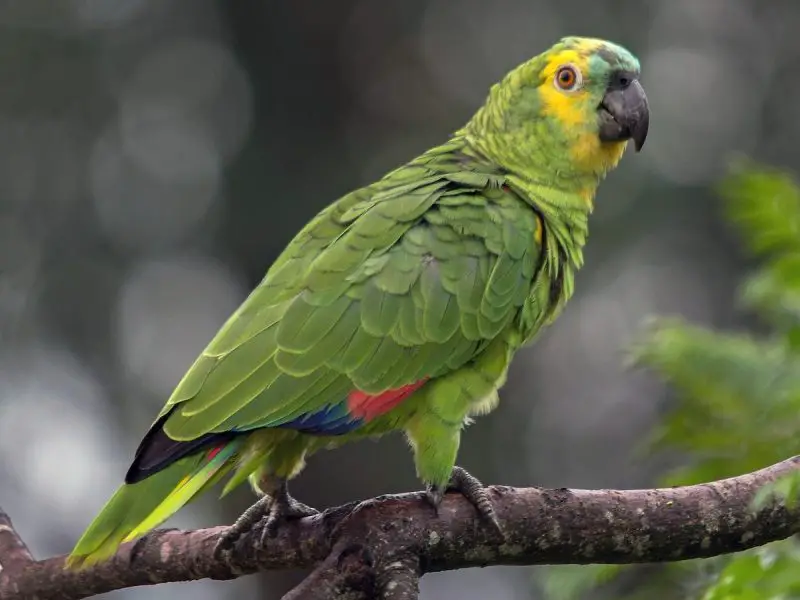
The Turquoise-fronted Parrot, also known as the Blue-fronted Amazon, is a medium-sized parrot native to South America but has established populations in Southern California, especially in urban and suburban areas. This parrot measures about 15 inches (38 cm) in length and is characterized by its bright green body with striking turquoise or blue feathers on the forehead. It also has yellow accents on the face and red markings on the shoulders.
This species is known for its loud, clear calls consisting of whistles, squawks, and chattering sounds. Their vocalizations are quite varied and can be melodic, often used to communicate within flocks and during social interactions. They are also good mimics and can imitate human speech in captivity.
Turquoise-fronted Parrots are highly social birds that live in flocks of various sizes. They spend much of their time feeding on fruits, nuts, seeds, and berries in trees or foraging on the ground. In California, these parrots adapt well to urban environments, often seen in parks and neighborhoods with mature trees.
The population of Turquoise-fronted Parrots in California is mainly concentrated in Southern California, where the climate suits their needs. They nest in natural tree cavities and sometimes in palm trees. Their adaptability to human-altered landscapes has helped them maintain stable populations outside their native range.
White-fronted Parrot (Amazona albifrons)
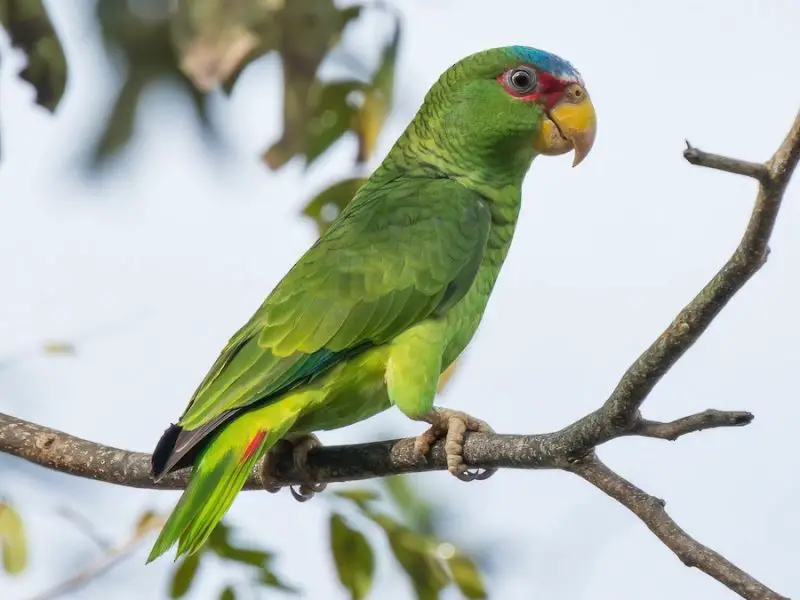
The White-fronted Parrot is a smaller Amazon parrot native to Central America, but feral populations have been reported in parts of Southern California. Measuring about 10 to 12 inches (25 to 30 cm) in length, this parrot features a bright green body with a distinctive white patch on the forehead, which gives the species its name. It also has subtle yellow markings on the face and wings.
White-fronted Parrots produce a range of vocalizations including loud squawks and shrill whistles. Their calls are used to maintain contact within flocks and to alert others of potential dangers. These parrots are also capable of mimicking sounds and human speech in captivity.
Behaviorally, White-fronted Parrots are social and often found in small to medium-sized flocks. Their diet mainly consists of fruits, seeds, and nuts, which they forage for in parks, gardens, and woodlands. In California, they tend to favor warmer urban areas with plenty of food sources.
Their established populations in California are localized primarily in the southern part of the state. They nest in tree cavities or sometimes use old woodpecker holes. The White-fronted Parrot’s ability to adapt to diverse urban habitats has supported its survival and spread in the region.
Mitred Parakeet (Aratinga mitrata)
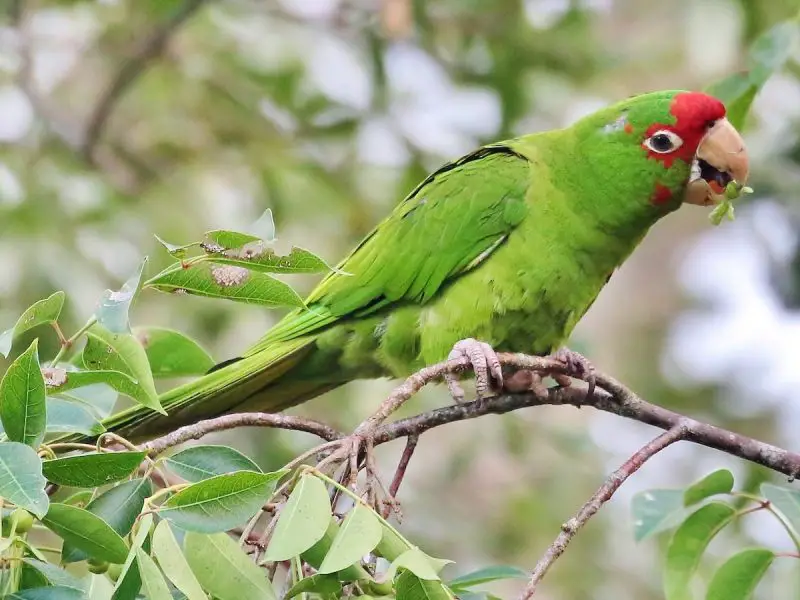
The Mitred Parakeet is a medium-sized parrot native to the Andes of South America but has established naturalized populations in Southern California. It measures around 15 inches (38 cm) in length and has predominantly green plumage with a distinctive red forehead and crown that resembles a “mitre,” hence the name. Their cheeks are also tinged with red, and blue highlights appear on the wings.
Their vocalizations are loud and harsh, including squawks, screeches, and chattering sounds that help maintain flock cohesion. These birds are known to be noisy, especially when flying or feeding in groups. Like many parrots, they are capable of mimicking sounds and human voices.
Mitred Parakeets are social and commonly seen in flocks ranging from a few individuals to dozens of birds. They feed on a variety of fruits, seeds, nuts, and flowers. In California, they adapt well to urban and suburban environments where food is abundant.
The feral population of Mitred Parakeets in California is mostly found in the southern metropolitan areas, such as Los Angeles. They nest in tree cavities and are known for their adaptability to human-modified landscapes. Their established presence contributes to the diversity of California’s wild parrot community.
Red-masked Parakeet (Aratinga erythrogenys)
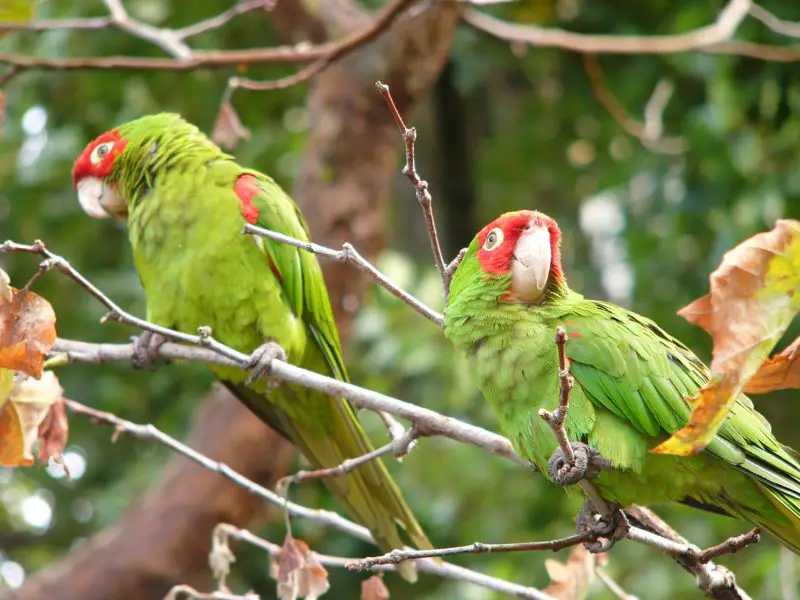
The Red-masked Parakeet, sometimes called the Cherry-headed Conure, is a colorful medium-sized parrot native to western Ecuador and Peru but has formed feral populations in Southern California. It is approximately 14 inches (35 cm) long with bright green plumage and a striking red mask covering the forehead, face, and throat areas.
This species produces a variety of vocalizations including loud, sharp squawks and chattering calls. Their vocal behavior is highly social and used to communicate with flock members, especially when flying or feeding. They are also capable mimics and popular in the pet trade.
Red-masked Parakeets are gregarious birds often observed in flocks ranging from small groups to large aggregations. Their diet consists mainly of fruits, nuts, seeds, and berries, foraged both in trees and on the ground. In California, they inhabit urban parks, gardens, and green spaces with abundant food sources.
Feral populations of Red-masked Parakeets in California are mostly located in urban areas of Southern California. They nest in tree cavities and occasionally in palm trees. Their ability to adapt to urban habitats has allowed these parrots to flourish outside their native range.
Blue-crowned Parakeet (Aratinga acuticaudata)
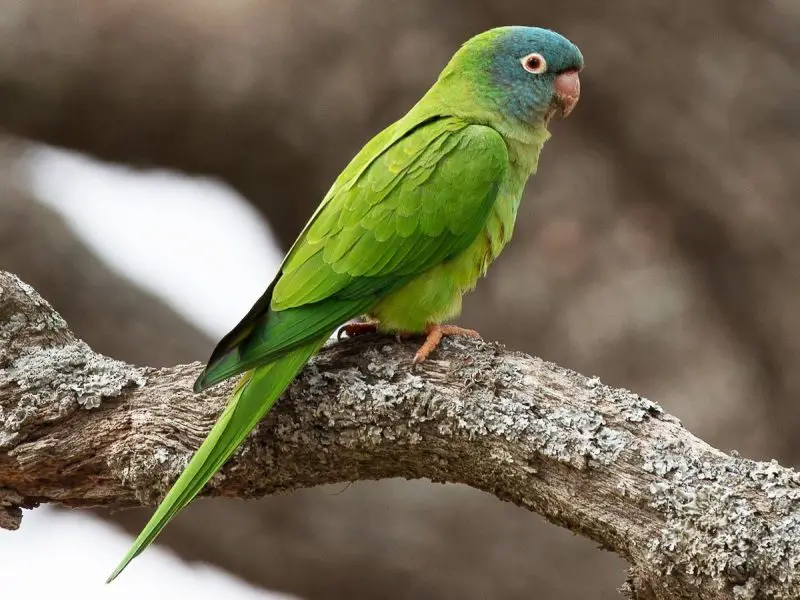
The Blue-crowned Parakeet, also known as the Sharp-tailed Conure, is a slender, medium-sized parrot native to South America. It measures about 13 to 15 inches (33 to 38 cm) in length and is primarily green with a distinctive blue crown on the top of its head. The bird also has yellow markings on its wings and face.
Their vocalizations include a variety of whistles, squawks, and screeches that are loud and carry over long distances. These calls serve important roles in flock communication and social interaction. Blue-crowned Parakeets are also capable of learning human speech when kept as pets.
These parrots are social and usually found in flocks that forage together for fruits, seeds, nuts, and blossoms. They are active and agile flyers, often seen in open woodlands, parks, and urban areas. In California, they have adapted to environments where food and nesting sites are available.
The established populations of Blue-crowned Parakeets in California are mainly in Southern California urban centers. They nest in natural tree cavities and have adapted well to the Mediterranean climate. Their presence adds to the rich diversity of exotic parrot species in the region.
Black-hooded Parakeet (Nandayus nenday)
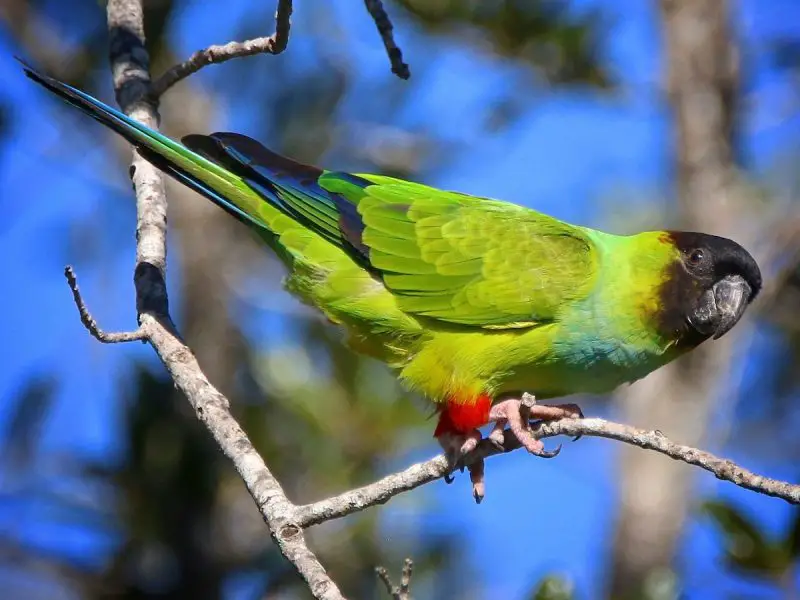
The Black-hooded Parakeet, also known as the Nanday Conure, is a medium-sized parrot native to South America, particularly in Argentina, Bolivia, and Paraguay. It measures about 12 to 14 inches (30 to 36 cm) in length and is easily recognizable by its black head and face, contrasting sharply with its green body and blue flight feathers. The bird also has a distinctive orange patch on its belly.
This species is highly vocal, producing a wide range of loud, harsh calls, squawks, and chattering sounds. Their calls serve to maintain group cohesion and alert others of potential danger. In captivity, Black-hooded Parakeets are known for their ability to mimic sounds and human speech to some extent.
Behaviorally, these parrots are social and often found in small flocks that forage together. Their diet consists mainly of seeds, fruits, nuts, and flowers. In California, they are generally found in urban parks and wooded areas where food and nesting sites are abundant.
The population of Black-hooded Parakeets in California is small but established, mostly concentrated in Southern California. They nest in tree cavities or abandoned woodpecker holes and have adapted to human-modified environments. Their presence contributes to the diversity of non-native parrots in the region.
Yellow-chevroned Parakeet (Brotogeris chiriri)
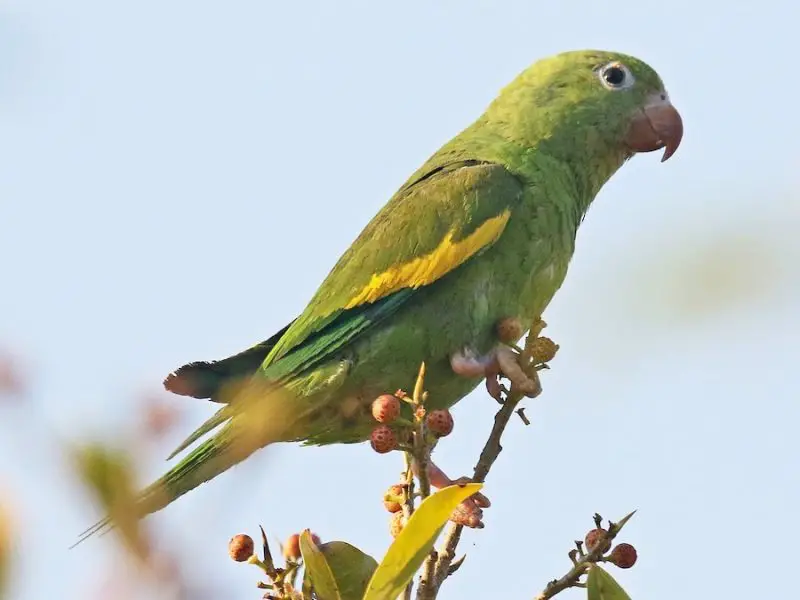
The Yellow-chevroned Parakeet is a small parrot native to South America, measuring about 9 inches (23 cm) in length. It is primarily green with distinctive yellow markings on the wings that form a chevron pattern, giving the species its name. The face is mostly green with some yellowish highlights, and the tail feathers are long and pointed.
These parakeets have a variety of vocalizations, including high-pitched chirps, whistles, and squawks. Their calls are usually soft but can become loud and rapid during social interactions or alarm situations. They use these sounds to communicate within flocks and to maintain contact during flight.
Yellow-chevroned Parakeets are social birds, often seen in flocks that feed on seeds, fruits, flowers, and nectar. In California, they adapt well to urban environments such as parks and gardens where food is plentiful. Their small size and agility help them navigate dense foliage while foraging.
The established populations of Yellow-chevroned Parakeets in California are mainly in the southern parts of the state. They nest in tree cavities and sometimes use abandoned nests of other birds. Their adaptability and social nature have allowed them to thrive in human-dominated landscapes.
White-winged Parakeet (Brotogeris versicolurus)

The White-winged Parakeet is a small, slender parrot native to South America, approximately 10 inches (25 cm) long. It has mostly green plumage with distinctive white patches on the wings visible during flight. The head is green with a slightly lighter shade around the face and throat.
This species produces soft, high-pitched calls including whistles, chirps, and gentle squawks. Their vocalizations help maintain flock cohesion and facilitate social interaction. White-winged Parakeets are generally quieter compared to larger Amazon parrots but remain vocal within their groups.
White-winged Parakeets are social birds that feed mainly on fruits, seeds, and blossoms. In California, they are mostly found in urban and suburban areas where trees and food resources are available. Their small size allows them to exploit food sources in dense vegetation and parks.
The feral populations of White-winged Parakeets in California are localized primarily in Southern California. They nest in tree cavities and are known to be adaptable to urban environments. Their presence adds to the diversity of exotic parrots inhabiting the region.
Rose-ringed Parakeet (Psittacula krameri)

The Rose-ringed Parakeet, also called the Ring-necked Parakeet, is a medium-sized parrot native to Africa and South Asia but has established feral populations worldwide, including California. This parakeet is about 16 inches (40 cm) long, with mostly bright green plumage, a distinctive red beak, and a black and rose-colored ring around the neck (more prominent in males).
Their vocalizations are loud and include a variety of harsh squawks, shrieks, and chattering calls used for communication within flocks and to establish territory. Rose-ringed Parakeets are known for their ability to mimic human speech and other sounds, making them popular pets.
These parrots are social and often found in large flocks. They feed on fruits, seeds, nuts, and blossoms and are highly adaptable to different habitats. In California, they thrive in urban parks, gardens, and wooded areas with abundant food and nesting opportunities.
Feral populations of Rose-ringed Parakeets in California are primarily located in metropolitan areas of Southern California. They nest in tree cavities and sometimes in building structures. Their adaptability and aggressive behavior in competition for resources have contributed to their successful establishment outside their native range.
Best Time and Places to See Parrots in California
California, especially its southern region, offers excellent opportunities to observe various species of naturalized parrots throughout the year. The Mediterranean climate with mild, wet winters and warm, dry summers creates favorable conditions for these exotic birds to thrive in urban and suburban environments. Parrots are generally active and visible during daylight hours, with peak activity occurring in the early morning (around sunrise) and late afternoon (before sunset) when they forage and socialize.
Some of the best places to spot parrots in California include urban parks, botanical gardens, and residential neighborhoods with mature trees, particularly palm trees and eucalyptus. Los Angeles is renowned for its diverse and abundant feral parrot populations, with neighborhoods such as Echo Park, Silver Lake, and Highland Park frequently hosting flocks of Red-crowned Parrots, Lilac-crowned Parrots, and other species. San Diego and parts of Orange County also have notable parrot sightings, especially in green spaces like Balboa Park and residential areas with rich vegetation.
The San Francisco Bay Area, including cities like San Francisco and Oakland, offers opportunities to see several parrot species, including Monk Parakeets and Rose-ringed Parakeets. These parrots have adapted well to the cooler climate compared to their southern counterparts, and urban green spaces and campuses are common places to observe them.
While parrots can be seen year-round, the breeding season—usually from late winter through spring—can be particularly interesting, as birds are more vocal and active. Observers may witness nesting behaviors, courtship displays, and fledglings learning to fly. Birdwatchers are encouraged to bring binoculars and listen for the distinctive calls that help locate these vibrant birds in their urban habitats.


